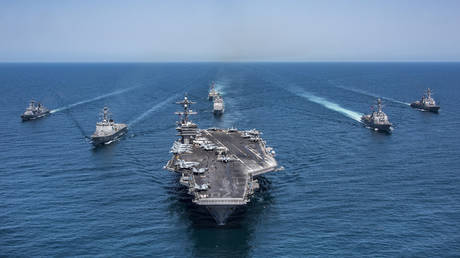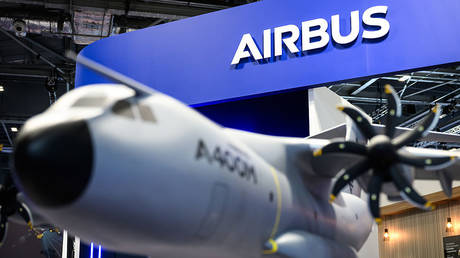
Governments around the world have increased their military spending to a level not seen since 1988 despite their economies suffering during the pandemic, a fresh study has said, adding that the US was ahead of the curve again.
Back in 2020, nations all over the world have been struggling to support their economies through the times of hardships and lockdowns caused by the onslaught of Covid-19. Those efforts apparently did not prevent them from spending more money on the military than ever before in more than three decades, the latest report by the Stockholm International Peace Research Institute (SIPRI) has shown.
The world’s military expenditures have risen by 2.6 percent in comparison to the previous year and reached $ 1.981 trillion – “the highest level since 1988” – a SIPRI report published on Monday said. Over the last decade, global military spending increased by almost 10 percent.
The increase came in a year when the world’s “gross domestic product (GDP) shrank by 4.4 percent,” the research institute notes, adding that the increase caused “the biggest year-on-year rise in the military burden since the global financial and economic crisis in 2009.”
“We can say with some certainty that the pandemic did not have a significant impact on global military spending in 2020,” said Dr Diego Lopes da Silva, a researcher with the SIPRI Arms and Military Expenditure Program. Still, some countries, like South Korea and Chile, preferred to spend some of the planned military funds on pandemic response while others, like Russia and Brazil, spent “considerably less” on defense then planned in 2020.
The US, however, still leads the list of the largest military spenders in the world by a wide margin. America’s military expenditures alone amounted to 39% of the global defense spending, SPIRI said, adding that the US also recorded one of the highest spending growth rates among the top 10 military spenders, surpassed only by Germany and South Korea, which have considerably smaller defense budgets.
“The recent increases in US military spending can be primarily attributed to heavy investment in research and development, and several long-term projects such as modernizing the US nuclear arsenal and large-scale arms procurement,” said Alexandra Marksteiner, a researcher with SIPRI’s Arms and Military Expenditure Program.
“This reflects growing concerns over perceived threats from strategic competitors such as China and Russia, as well as the Trump administration’s drive to bolster what it saw as a depleted US military,” she added.
The US closest “competitor” – China – spent around three times less money on defense and its military spending in 2020 accounted for some 13 percent of the global tally. Beijing did not have to raise its defense spending at the expense of increasing the military burden, since its economy was one of the few still growing in 2020.
India, Russia and the UK also made it to the list of the top five military spenders, although their defense budgets were considerably smaller than those of China, not to mention the US. Saudi Arabia was the only nation among the top 10 military spenders that had its defense expenditures decreased in 2020.
The economic downturn coupled with the continuous increases in military spending helped some NATO members to hit the Alliance’s spending target as 12 member-states spent two or more percent of their GDP on defense, SIPRI notes, adding that only nine did so in 2019. France was particularly the one to cross the two-percent threshold for the first time since 2009.
Whether it would enhance the alliance’s capabilities is another issue, though, since the development “probably had more to do with the economic fallout of the pandemic than a deliberate decision to reach the Alliance’s spending target,” at least in some cases, da Silva said.
Think your friends would be interested? Share this story!




